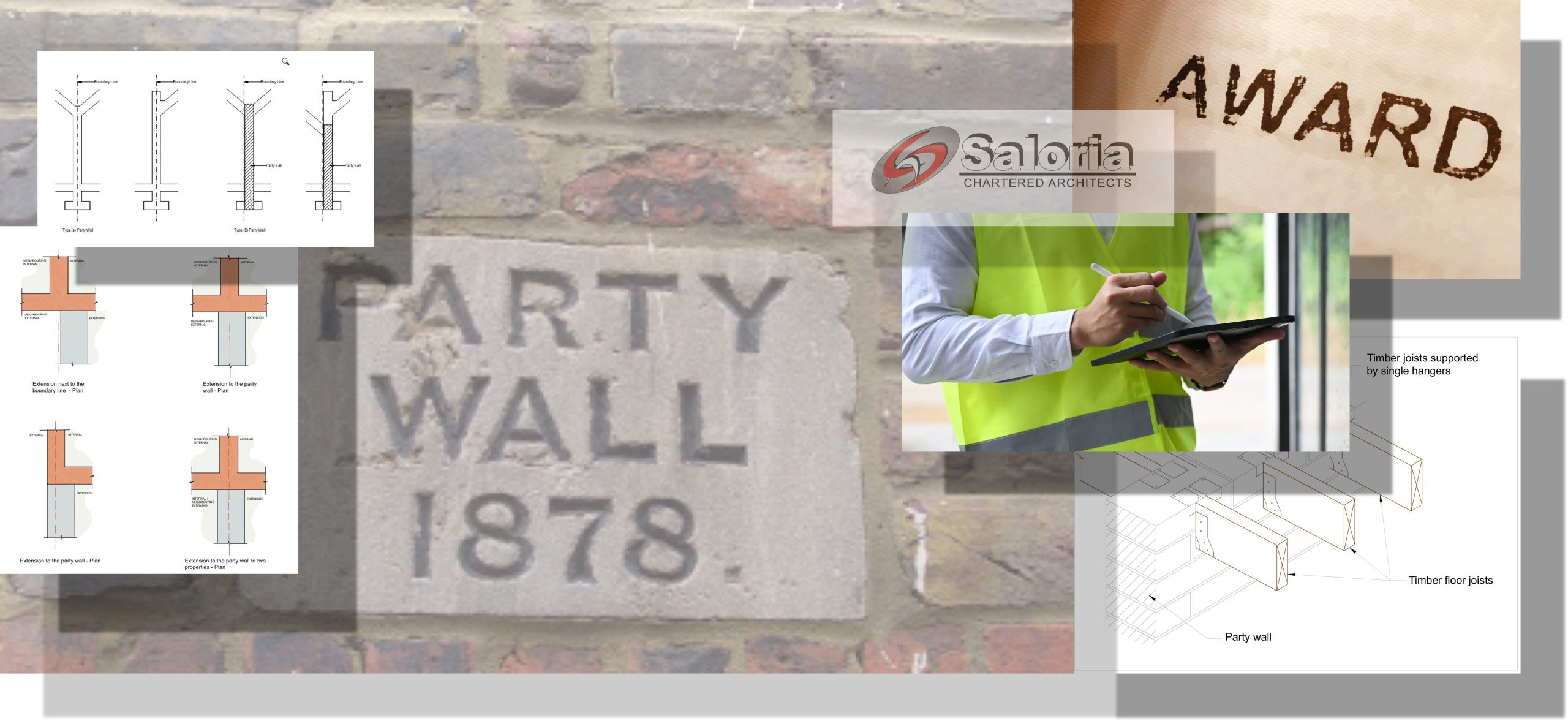
The Party Wall Process Explained: Agreements, Awards, and Your Responsibilities
When undertaking construction work near a shared boundary, many property owners are unsure whether they need a Party Wall Agreement or a Party Wall Award. While these terms are often used interchangeably, they have distinct meanings under the Party Wall etc. Act 1996, which governs building works in England and Wales.
At Saloria Architects we here to help, and we’d like to start by explaining the differences between these two terms.
A Party Wall Agreement is an informal understanding between neighbours regarding works that affect a shared wall or boundary. If both parties agree in writing and no disputes arise, the process remains simple and straightforward.
A Party Wall Award is a legally binding document prepared by one or more surveyors when an agreement cannot be reached between property owners. This formal document outlines the rights and responsibilities of both parties, detailing the scope of works, conditions, and dispute resolution mechanisms. The agreement is designed to protect both property owners from potential disputes and structural damage.
When Do You Need a Party Wall Award?
A Party Wall Award is required when a neighbour disagrees with the proposed works, or when one or both parties appoint a surveyor to oversee the process. The Party Wall etc. Act 1996 applies to work that involves:
- Build on or at the boundary of two properties.
- Carry out work directly on an existing party wall or structure.
- Excavate near a neighbouring property (typically within 3-6 metres, depending on depth).
Common projects that require a Party Wall Award:
- Loft conversions.
- Extensions.
- Basement excavations.
- Removing or altering a shared chimney breast
Who do you need if you proceed with a Party Wall Award
- If you are the “Building Owner” (the person who will be carrying out the works): you might wish to appoint a surveyor (in this case the Building Owner’s surveyor) to assist you in preparing the required “notices”, and arrange a survey at your neighbours’ premises to prepare the schedule of conditions.
- If you are the “Adjoining Owner” (the neighbour who is affected by the works): you might wish to appoint a surveyor (in this case the Adjoining Owner’s surveyor) to assist you to check that the building owner and their surveyor are acting properly. Alternatively, both parties can agree on a single joint surveyor to oversee the process impartially.
How an Architect Can Help
- Initial Guidance: Architects can advise clients on whether their project falls within the scope of the Party Wall etc. Act 1996.
- Design Considerations: They ensure designs comply with regulations and minimise potential disputes.
- Liaison with Party Wall Surveyors: Architects work alongside surveyors to prepare necessary notices and agreements.
- Managing the Process: They can help coordinate timelines and communicate with neighbours to streamline the process.
The Party Wall Process Step by Step
- Notifying Stage:
The Building Owner serves a formal Notice detailing the proposed works.
The Adjoining Owner can agree (ending the process) or dissent (triggering a formal dispute resolution).
2. Dispute Stage:
If the Adjoining Owner dissents, surveyors are appointed.
The surveyor(s) inspect the property, take photographs, and prepare a Schedule of Condition.
They review technical drawings and assess the impact on the party wall.
3. Award Issuance:
The surveyor(s) prepare and issue the Party Wall Award, listing the works allowed, responsibilities, and dispute resolution terms.
If further changes arise, an addendum may be issued.
4. Completion and Final Inspection:
After the works are completed, surveyors inspect the property to check for damages.
If no issues arise, the process is formally closed.
Expected Timeline
The Party Wall Award process typically takes four to six weeks, provided all drawings and details are in place and the Adjoining Owner cooperates. If separate surveyors are appointed, the process may take longer.
Who Pays for a Party Wall Award?
The Building Owner usually covers all costs, including:
- Surveyor’s fees (for both their own and the Adjoining Owner’s surveyor, if required).
- Preparation of the Party Wall Award.
- Any necessary remedial work identified during the process.
Final Thoughts
Understanding the difference between a Party Wall Agreement and a Party Wall Award is crucial for property owners planning construction near shared boundaries. At Saloria Architects, we guide our clients through this process, ensuring compliance with legal requirements while fostering good neighbourly relations.
If you are planning works that might affect a shared structure, contact us for professional advice on how to proceed efficiently and legally.

